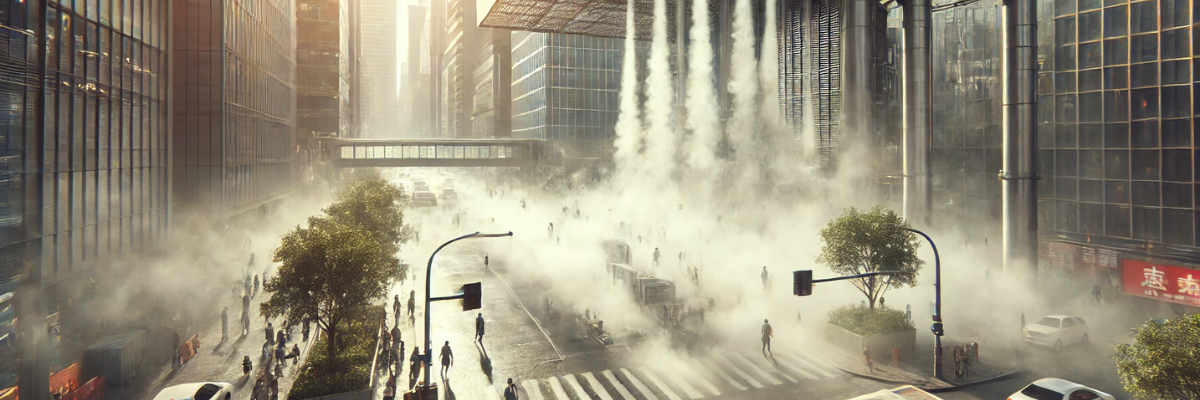Misting and fogging systems can be effective tools for reducing air pollution, particularly in areas where dust, particulate matter, and pollutants contribute to poor air quality. Here’s how misting and fogging systems help in getting rid of air pollution:
1. Dust Suppression
- Fine Water Droplets: Misting systems release fine water droplets that bind to dust particles and other airborne pollutants. This causes the particles to become heavier and fall to the ground, preventing them from staying suspended in the air.
- Efficient for Industrial Areas: Misting systems are highly effective in construction sites, mining areas, and industrial zones where dust levels are high, reducing the spread of particulate matter (PM) and improving air quality.
2. Cooling and Air Moistening
- Lowering Air Temperature: In urban and industrial areas, misting systems can cool the surrounding environment by evaporative cooling. This cooling effect reduces the buildup of heat and limits the formation of secondary pollutants like ground-level ozone.
- Humidification: Fogging systems can increase the humidity in dry environments, reducing the risk of airborne particulates being dispersed into the atmosphere. This can be particularly useful in arid regions prone to dust storms.
3. Pollutant Neutralization
- Binding Pollutants: Fogging systems are sometimes used to introduce neutralizing agents into the air, such as chemicals that can bind with pollutants (e.g., sulfur dioxide, nitrogen oxides) and neutralize them, rendering them less harmful.
- Odor and Gas Control: In some industries, fogging systems are used to control odors and hazardous gases by spraying odor-neutralizing solutions.
4. Indoor Air Quality Improvement
- Industrial and Commercial Applications: In large indoor spaces like warehouses and factories, misting and fogging systems can reduce airborne contaminants, improving air quality and creating healthier work environments.
- Hospitals and Public Spaces: Misting systems can be applied in public spaces to manage particulate pollution and increase air cleanliness, which can help in sensitive environments like hospitals or schools.
5. Urban Dust Control
- Public Spaces: Misting systems can be deployed in urban areas, parks, and streets to reduce road dust, vehicle emissions, and particulate matter, making city air cleaner and more breathable.
- Environmental Sustainability: These systems use minimal water and energy, making them eco-friendly solutions for air pollution control.
Benefits:
- Reduced Health Risks: By lowering the concentration of airborne pollutants, these systems help reduce respiratory and cardiovascular issues caused by poor air quality.
- Environmental Friendly: Misting and fogging systems rely primarily on water, reducing the need for harmful chemicals or air purifiers that may have ecological side effects.
- Cost-Effective: They offer a relatively low-cost solution for controlling pollution compared to large-scale air purifying infrastructure.
By employing misting and fogging systems in both industrial and urban settings, it’s possible to mitigate air pollution significantly, improving overall environmental and public health outcomes.


Recent Comments